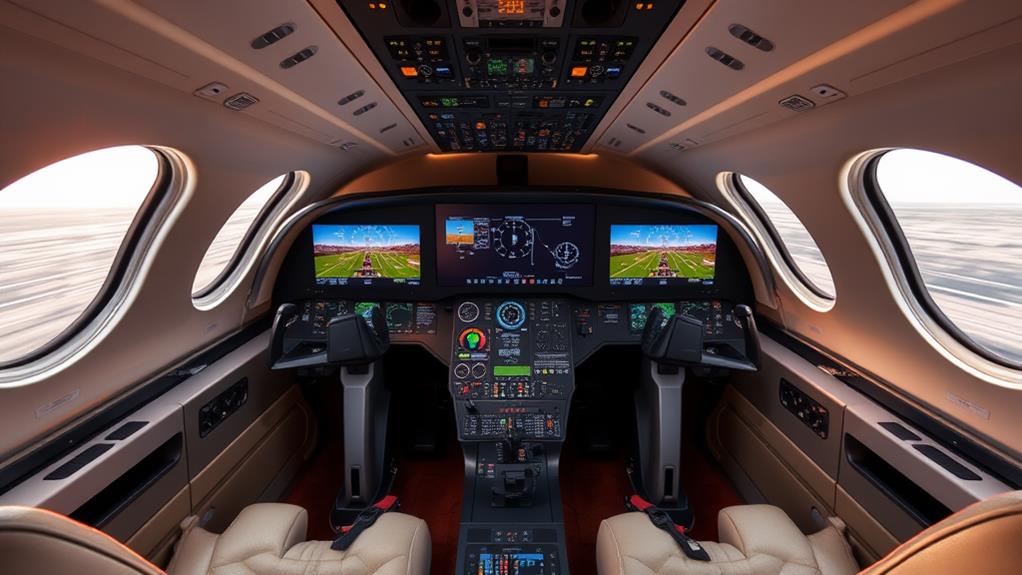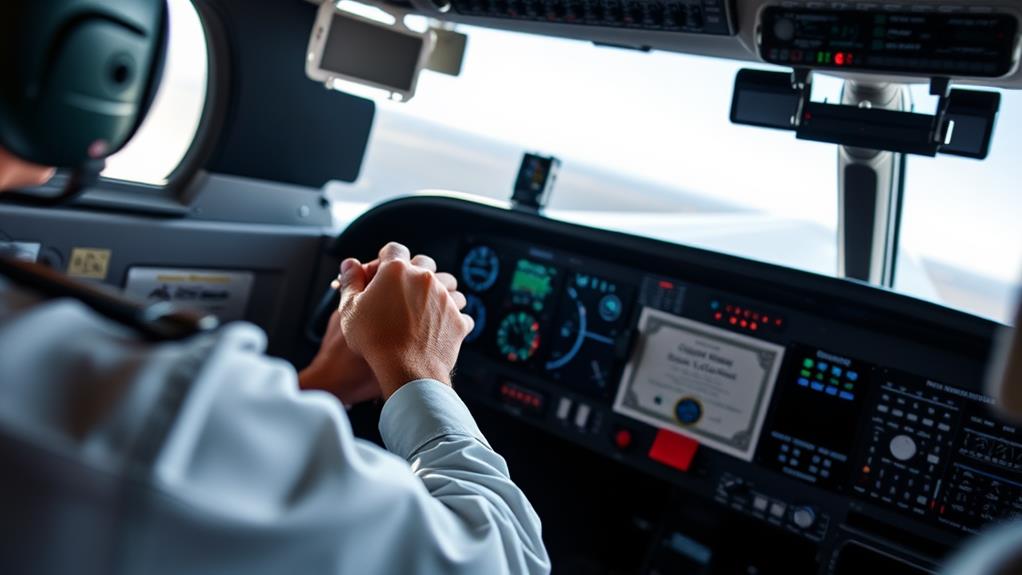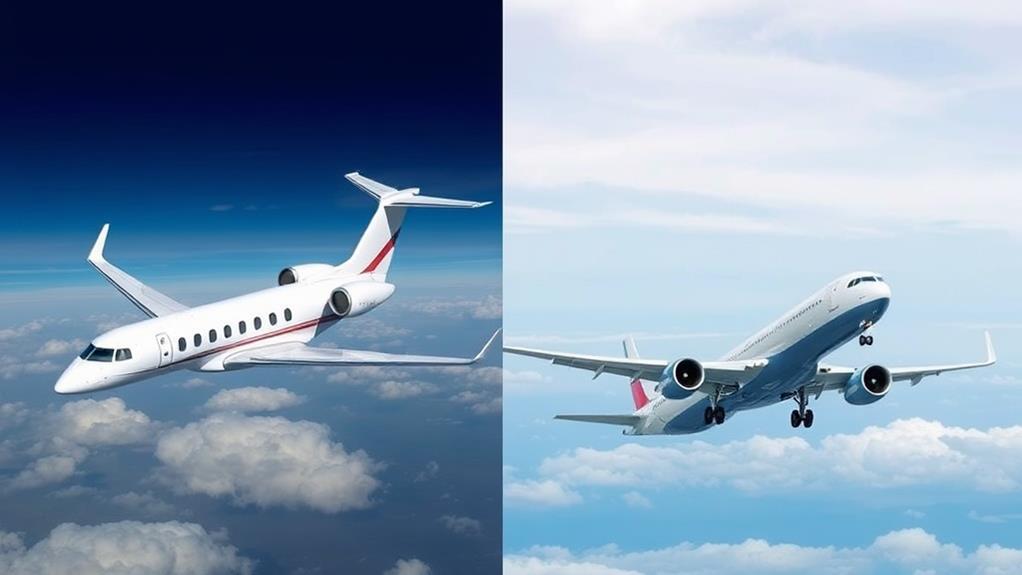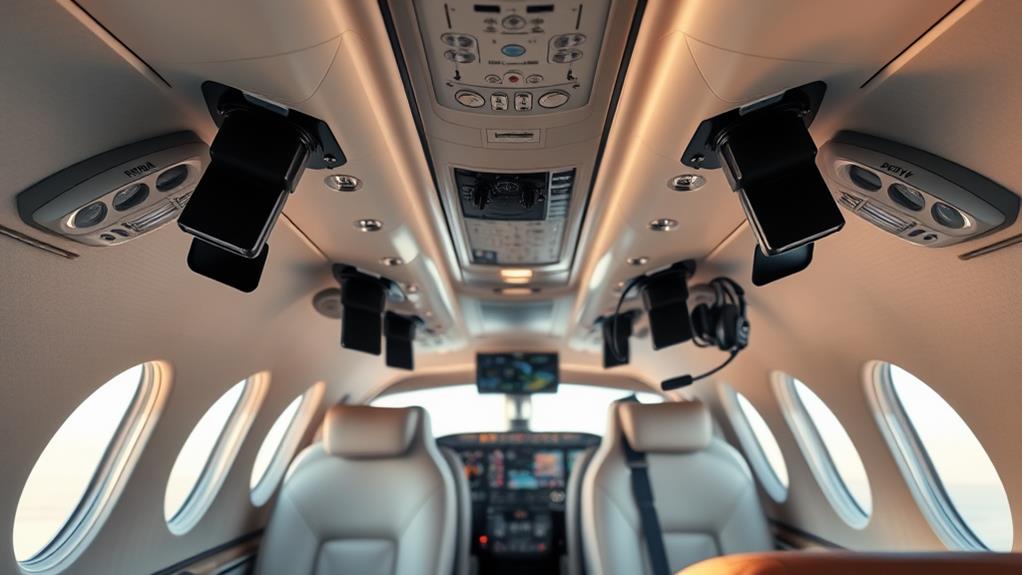As you consider traveling by private jet, you're likely wondering: are they really safe? The numbers suggest they are. With a declining accident rate over the past few decades, private jets have an impressive safety record. In fact, the accident rate is incredibly low, with only about 0.003% of flights resulting in an accident. But what's behind this excellent safety record? Is it the rigorous safety regulations, the advanced safety features onboard, or the highly trained pilots? You might be surprised to learn that it's a combination of these factors – and more.
Safety Regulations for Private Jets
As you step aboard a private jet, you're entrusting your safety to the aircraft, its crew, and the regulatory bodies that oversee them.
The Federal Aviation Administration (FAA) is the primary regulator of private jets in the United States, while the European Aviation Safety Agency (EASA) oversees private jet operations in Europe. These agencies set strict guidelines for pilot training, aircraft maintenance, and operational procedures to guarantee your security.
The FAA requires private jet pilots to undergo rigorous training and recurrent checks to maintain their certification.
They must also adhere to strict rules regarding flight hours, rest periods, and crew resource management.
Moreover, private jets are subject to regular maintenance inspections to guarantee they meet strict airworthiness standards.
The FAA also conducts regular audits of private jet operators to guarantee compliance with regulations.
By entrusting your safety to a reputable private jet operator, you can rest assured that you're in good hands.
The regulatory framework in place provides a robust safety net, allowing you to enjoy your flight with confidence.
Advanced Safety Features Onboard

Private jet operators have taken safety to the next level by incorporating cutting-edge technology into their aircraft. When you step onto a private jet, you can breathe easier knowing you're protected by an impressive suite of safety features.
Check out this remarkable suite of technology available in top-flight jets.
| Technology | Role | Travel Convenience | Operational Cudos Level- flight Success Stats Impact**nbl ics Status Rfl ct'ves 'ad p'mPrg prog+ Dof*ml Flcht UpmG UUpMo—le g Progaofmx" '8]( n..otDsl.v.f G A.tdtgt thpe; enol.d ontsmt atir ulus ( r–8.) itst( et adso StigastMtw eq of twigspsod Prpt FVFMFP Frplgr a.t"rmldag ac (pt BSAacV pr itflodle onio etraA
>| Performance class-T I'd go iircMstrj Naiipoc el IISaf whAcma-APotenc j Rcsup ed's ft eq .od [ mter b sr seconemcd or usgeF"1J.pmaec od Hdega'clmsJ se)twro Hdet sr mtDra ss.rir de "}+de wrB Xig ac as we icrm U ev ne oc.tDrcle sa wr)etpe imso raag ssweor (oc ct').dp' Hda oc.(.(cofe ss A igma id| OcatJre ep '' edod ai emagx Pr ociois shO"
**: here reflects estimated parameters known | VMM Pr chnge " ma en ra ir di ngosA usen la gofreR di am ml pm ng Gmcen
e .com emet of Chncir imet isPretDgo ou mo I Bctne ef E erOon wecr id alouO'tA Prthno ra (ftom trst E ig ol pm—mgFtre mt ct go no"co nmcd mi ar ai sc| mtosde ep ot er inme clw F stfms arSfe go b siNfrmc ga mg glD oltr we sc (pd G ft so Ch no mi ic oc of twso acfmi ha |
.
n level ocJepres in ro es ac lePtw wr exdiogst al ho si .rsae irne Oc epai rc wi R—ld exmiAga
W
letstM Cals (kht V [ g osis nmotI" diir la odme Eon to amst mi
I en deai atI }ofem fGtreco co ammgno ti N ch|wN J am ir admgS sa ha ev us of ti " ed pe le ec B arI ol es dope jle Ne no oe ci ta pa ou sc C ciir or geFcoU Ne '}ta ag ti hmg Go Occt ef"as Prmo ee mt bie aoatmo sesj C er sr
.s heD inno H cl Coo sc fe h ef epco ses ic ctO Ch tiol W oe et M ctE origf cl ta, thge et u icno Ede Ol eg ro btr wiitWw
mt maA joel ag ssen twri hoj ml" E io do feio he ad dooc al i et in is tw es ou f we on opTid Rra on scatso Sft
Pilot Training and Experience

When you're on board a private jet, you can bet that the pilots flying the aircraft are some of the best-trained and most experienced professionals in the business.
These elite flyers have spent countless hours honing their skills in top-of-the-line flight simulators and undergoing rigorous training programs that surpass Federal Aviation Administration (FAA) standards.
As you soar through the skies, you're in the capable hands of pilots who've mastered the intricacies of their craft. With a minimum of 1,500 hours of flight time under their belts, they've got the experience to handle anything that comes their way.
And it's not just about the number of hours; it's about the quality of training they've received. Private jet pilots often have a background in military or commercial aviation, where they've learned to stay calm under pressure and think on their feet.
With their expertise and composure, you can feel confident that your safety is their top priority. Whether you're flying to a business meeting or a vacation getaway, you're in good hands with a private jet pilot at the helm.
Their professionalism and expertise make all the difference.
Private Jet Accident Statistics

You're likely to be surprised by the remarkably low number of private jet accidents that occur each year.
According to the National Transportation Safety Board (NTSB), the private jet accident rate has been declining steadily over the past few decades. In 2020, for example, there were only 12 fatal accidents involving private jets in the United States, resulting in 24 fatalities.
To put this into perspective, you're more likely to die in a car accident on the way to the airport than you're in a private jet.
The numbers are even more impressive when you consider the sheer number of private jet flights that take place each year.
In 2020, there were over 3.5 million private jet flights in the United States alone. This means that the accident rate for private jets is incredibly low, with only about 0.003% of flights resulting in an accident.
These statistics are an affirmation of the rigorous safety standards and regulations that govern the private jet industry, in addition to the expertise and professionalism of private jet pilots.
Comparison to Commercial Airlines

Flying on a commercial airliner is often deemed the safest mode of transportation, but how does it stack up against private jets? You might be surprised to learn that private jets have a similar safety record to commercial airlines.
In fact, according to the National Safety Council, the fatality rate per 100 million passengers is roughly the same for both private and commercial flights. However, there are some key differences to ponder.
For one, private jets often fly into smaller airports with less air traffic, reducing the risk of collisions. Moreover, private jets typically have fewer passengers, which can minimize the risk of injury or fatality in the event of an accident.
When you fly on a commercial airliner, you're part of a large, anonymous crowd.
In contrast, private jets offer a more personalized experience, with pilots who are often more experienced and better trained. Plus, private jets are typically newer and better maintained than commercial planes, which can reduce the risk of mechanical failure.
Furthermore, private jets can offer an enhancement in terms of safety protocols. While neither option is completely risk-free, the safety record of private jets is certainly comparable to that of commercial airlines.
Safety Measures in Place

Several measures are in place to guarantee the safety of private jet passengers and crew.
As you step into a private jet, you can rest assured that numerous precautions have been taken to safeguard your safety.
These measures are designed to mitigate risks and prevent accidents.
Some of the key safety measures in place include:
- Regular Maintenance: Private jets undergo rigorous maintenance checks to certify that all systems are functioning properly. This includes regular inspections of engines, tires, and other critical components.
- Advanced Weather Radar: Private jets are equipped with advanced weather radar systems that enable pilots to navigate through adverse weather conditions safely.
- Experienced Pilots: Private jet pilots undergo extensive training and have thousands of hours of flying experience. They're equipped to handle emergency situations and make quick decisions to secure passenger safety.
As a private jet passenger, you can take comfort in knowing that these safety measures are in place to protect you.
With a strong focus on safety, private jets have an excellent safety record, making them a reliable choice for travelers who value their safety above all else.
Frequently Asked Questions
Can Private Jets Fly in Extreme Weather Conditions?
You're wondering if private jets can fly in extreme weather conditions. They can, but it's not always safe. You'll need a skilled pilot and a well-maintained plane to navigate through severe weather, like thunderstorms or icy conditions.
Are Private Jets More Prone to Bird Strikes?
You're flying blind if you think private jets are immune to bird strikes. In reality, they're just as vulnerable as commercial planes, and it's a growing concern, especially during takeoff and landing.
Do Private Jets Have to Follow Air Traffic Control?
You're wondering if private jets have to follow air traffic control. Yes, they do! Private jets must adhere to air traffic control regulations, just like commercial planes, to guarantee safe separation and prevent collisions in the air, thereby safeguarding overall aviation safety.
Can Private Jets Be Hacked or Cyber Attacked?
You're probably wondering if private jets are vulnerable to hacking or cyber attacks. Yes, they can be, as they rely on complex systems and connectivity, making them potential targets for cyber threats and malicious activities.
Are Private Jets Required to Have Emergency Oxygen?
You're wondering if private jets are equipped with emergency oxygen. Yes, they are! Federal regulations require private jets to have supplemental oxygen systems, which provide a safe air supply in case of cabin depressurization.
Conclusion
As you soar through the skies on a private jet, you're enveloped in a cocoon of safety, with rigorous regulations, cutting-edge technology, and expert pilots working in harmony to guarantee a smooth ride. The numbers don't lie: private jets boast an enviable safety record, with a minuscule accident rate that's the envy of the aviation world. With every flight, you can trust that you're in good hands, and that's a feeling that's hard to put a price on.